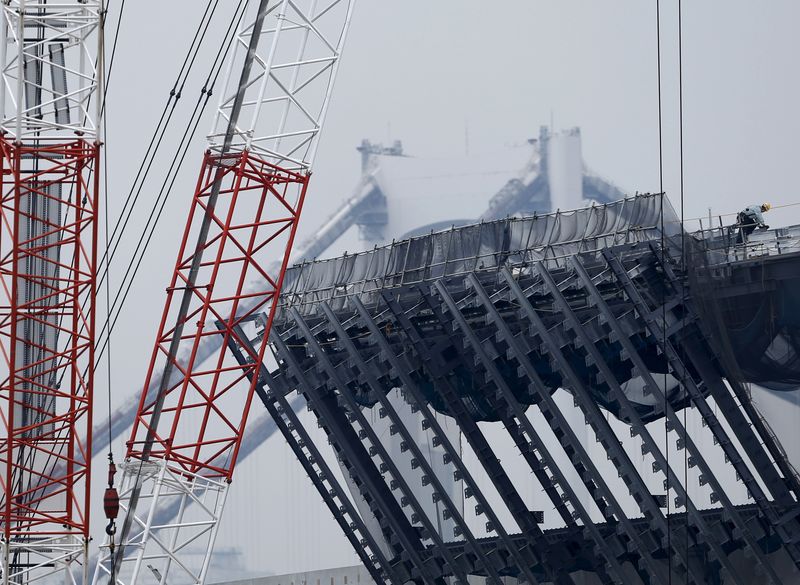By Indradip Ghosh and Leika Kihara
BENGALURU/TOKYO (Reuters) -Global factory activity offered signs of recovery last month as contraction slowed in the euro zone and manufacturing activity in most of Asia's largest economies picked up, although the U.S. stood apart with output weakening for a second straight month, private business surveys showed on Monday.
The softness in the U.S. notwithstanding, improved overall business sentiment suggests more solid momentum in the global economy, defying slowdown expectations prevalent earlier this year, and offering a reason for central banks to hold off cutting interest rates or to proceed cautiously when they do.
While a more solid expansion in Asia took hold, the surveys also showed signs that the euro zone's manufacturing sector may have turned a corner last month after a long downturn. Activity in Germany and France, the bloc's two biggest economies, showed signs of bottoming out.
HCOB's final euro zone manufacturing Purchasing Managers' Index (PMI), compiled by S&P Global, rose to 47.3 in May from 45.7. It held below the 50 point mark that separates expansion from contraction for a 23rd month and came in just shy of a 47.4 preliminary estimate.
"It's positive confirmation we've seen the bottoming out of the cycle ... it points to probably a slight acceleration of growth," said Carsten Brzeski, global head of macroeconomics at ING, about the euro zone surveys.
Other global PMIs were also "positive and encouraging," he said. "I think it is also reflecting China is doing better than anticipated and reflecting the U.S. resilience to some extent."
Falling production costs suggested price pressures were easing in the currency bloc, giving the European Central Bank room to deliver a widely expected 25-basis-point interest rate cut on Thursday.
British manufacturers also reported a return to growth last month after a long slowdown.
In the U.S. the Institute for Supply Management reported activity slowed for a second straight month in May as new goods orders dropped by the most in nearly two years, but a measure of input inflation fell back from the highest since mid-2022.
The U.S. factory sector has been under pressure for well over a year, with ISM's measure of output in contraction now for 18 of the past 19 months, as high interest rates resulting from Federal Reserve monetary policy tightening curbed demand for goods.
ASIA MANUFACTURING POWERS AHEAD
In Asia, manufacturing activity expanded in Japan for the first time in a year and South Korea's manufacturing grew at the fastest pace in two years, due in part to signs of a pick-up in the automobile and semiconductor sectors, the surveys showed.
Manufacturing recovery should underpin Asian economic growth and help soften the impact of any market volatility caused by uncertainty over the U.S. monetary policy outlook.
"South Korea's manufacturing sector appears to have caught a second wind," said Joe Hayes, principal economist at S&P Global Market Intelligence.
"Qualitative evidence from the survey also paints a promising forward-looking picture, with panelists commenting on imminent new product launches providing them with a platform for sustainable production expansion."
Manufacturing activity also expanded in Taiwan, Indonesia, Vietnam and the Philippines.
In China, the private Caixin survey also showed factory activity in Asia's top economy rising at the fastest pace in about two years on strong production and new orders.
However, the results follow an official survey on Friday that showed a fall in manufacturing activity, leaving some cautious about the outlook.

"The improvement in factory activity may be driven by hopes that China's production will increase ahead. But the problem is that demand in the country isn't improving much," said Toru Nishihama, chief emerging market economist at Japan's Dai-ichi Life Research Institute.
"It's too early to judge whether the improvement will be sustained, given uncertainty over the strength of big markets like China and the United States," he said.